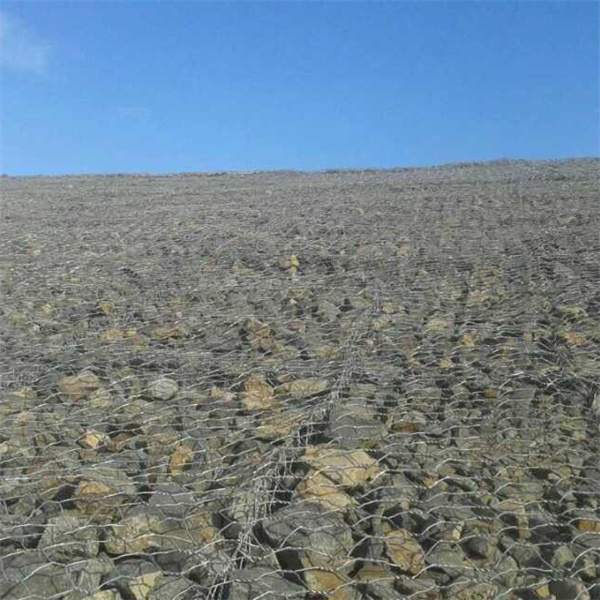Nov . 30, 2024 04:34 Back to list
Affordable and Effective Gabion Retaining Wall Solutions for Your Landscaping Needs
Best Low Gabion Retaining Wall A Comprehensive Guide
When it comes to landscaping and structural solutions, a low gabion retaining wall stands out as a practical and aesthetically pleasing option. These walls not only provide essential support for soil and prevent erosion, but they also enhance the visual appeal of a garden or outdoor space. In this article, we’ll explore the advantages, construction methods, and design considerations for the best low gabion retaining walls.
What are Gabion Walls?
Gabion walls are structures made of wire mesh cages filled with rocks, stones, or other materials. The term gabion originates from the Italian word “gabbione,” meaning “big cage.” These walls are typically used to stabilize soil, manage water runoff, and create attractive landscaping features. The natural materials used in gabion walls blend well with their surroundings, making them a popular choice for both residential and commercial landscaping projects.
Advantages of Low Gabion Retaining Walls
1. Erosion Control One of the primary functions of a retaining wall is to prevent soil erosion. Low gabion walls can effectively hold back soil in sloped areas, minimizing the risk of landslides or earth movement.
2. Durability Made primarily from natural stone and wire mesh, gabion walls are highly durable and resistant to weather-related wear and tear. They can withstand heavy rain, which is essential for areas prone to flooding or excessive moisture.
3. Cost-Effective Gabion walls are often more affordable than traditional retaining walls made from concrete or brick. The materials used can frequently be sourced locally, further reducing costs.
4. Environmental Integration Gabion walls can effectively integrate with the environment. They allow for natural drainage, promoting groundwater recharge and reducing surface runoff while providing habitat for flora and fauna.
5. Aesthetic Versatility With various materials and designs available, gabion walls can be tailored to fit the aesthetic of any landscape. The natural stone creates a rustic appearance, while carefully selected stones can enhance the overall elegance of the design.
Constructing a Low Gabion Retaining Wall
Step 1 Planning and Design
Before beginning construction, it is crucial to assess the landscape, drainage patterns, and the purpose of the wall. Determine the desired height and length of the wall, keeping it within the “low” profile to ensure easier maintenance and minimal obstruction.
Step 2 Gathering Materials
best low gabion retaining wall

Select a suitable size of gabion cages, which can be purchased from hardware stores or online suppliers. For the filling stones, choose materials that are durable and aesthetically pleasing. Local river stones or granite boulders can provide the ideal combination of strength and beauty.
Step 3 Preparing the Site
Clear the area where the wall will be built of any vegetation, rocks, or debris. It's essential to create a level base for the wall, ensuring stability. Depending on the slope, you may need to dig a trench to secure the bottom of the gabion cages.
Step 4 Assembling the Gabion Cages
Assemble the gabion cages according to the manufacturer's instructions. Connect the cages securely to maintain their shape. Fill the cages with your selected stones, keeping the rocks tightly packed to prevent shifting.
Step 5 Placement
Once filled, carefully position the gabion cages in the prepared site. Ensure they are aligned and level. For added stability, you may want to stack multiple cages.
Step 6 Backfilling
After placing the top layer of the wall, backfill soil against the back of the cages to provide additional support. It's essential to compact the soil to minimize settling in the future.
Design Considerations
When designing a low gabion retaining wall, consider incorporating vegetation or decorative elements. Planting grasses or shrubs at the top can soften the wall's appearance and provide additional erosion control. Also, think about the color and size of the stones used, as they can significantly affect the visual outcome of the wall.
Conclusion
A low gabion retaining wall is not just a functional structure; it’s an opportunity to enhance your landscape beautifully. With their sturdiness, cost-effectiveness, and environmental benefits, they represent one of the best choices in the realm of retaining walls. By carefully planning and executing the construction process, homeowners can create stunning and resilient outdoor spaces that stand the test of time.
-
Versatility of Chain Link Fence Gabion
NewsMay.13,2025
-
Trusted Gabion Box Suppliers
NewsMay.13,2025
-
PVC Coated Gabion for Long-Lasting Structural Integrity
NewsMay.13,2025
-
Garden Gabion for Stylish
NewsMay.13,2025
-
Galvanized Gabion for Durable Outdoor Structures
NewsMay.13,2025
-
Gabion Box Factory
NewsMay.13,2025
-
Gabion Basket Wire Gauge and Mesh
NewsMay.13,2025






